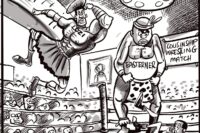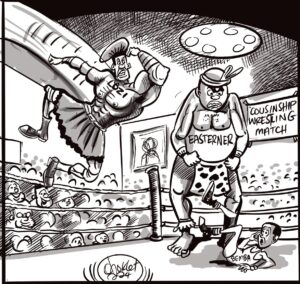The Judiciary has formulated a dress code manual outlining specific attire to guide all workers on the most appropriate and consistent ways of reflecting the institution’s character.
According to the manual, released Wednesday, the Judiciary was prompted to formulate a dress code for legal practitioners after noticing ‘all sorts of attire’ on its staff that did not reflect the ‘soberness’ of the institutions’ character.
The Judiciary encouraged all its members of staff to comply with the stipulated guidelines in the manual on dress code, explaining that failure to adhere to the standards of dress would constitute misconduct which could result in formal disciplinary proceedings.
“Members of staff are required at all times to be modestly clothed in formal attire. Those who are required to wear uniforms due to the nature of their work shall be required to be dressed in the respective attire provided by the Judiciary, and these shall include, but not limited to: uniforms by security personnel; work suits; dust coats; gum boots. Recommended colours for suits for both male and female members of staff are: blue, black, and grey. Leather jackets, jeans, corduroy, chinos and any other such materials are not permitted. Female members of staff are required at all times to be modestly clothed in formal attire. Hair styles, and accessories for women must be simple and not in loud or bright colours. Shirts must be neatly tucked in at all times; scarves may be worn to match dress attire. All skirts and dresses must be knee length or below, neutral colours – black, blue, grey and other dark colours. Women in a family way should wear decent maternity outfits,” the manual demanded.
“Male members of staff are required at all times to be modestly-clothed in formal attire. Hair should be kept neat and kempt. Shirts must be neatly tucked-in at all times, ties must be worn to match the attire. Ankle-revealing trousers must not be worn, neutral colours – black, blue, grey and other dark colours. Please note that leggings, traditional outfits, shorts, transparent materials or materials with holes, jeans, tracksuits (except in sporting events), facial rings (nose, eyebrow, tongue, lip), leather jackets, ankle revealing trousers and brightly coloured hairstyles, cannot be worn as part of Judiciary dress code.”
The Judiciary encouraged all members of staff to adhere to the stipulated guidelines, disclosing that violating the stipulated dress code three consecutive times would result in misconduct.
“All members of staff are required to comply with what is stipulated in the manual on dress code. Failure to adhere to the standards of dress will constitute misconduct, and may result in formal disciplinary proceedings. Line supervisors are responsible for monitoring and enforcing the stipulated dress code and failure to enforce the dress code shall attract disciplinary action against the erring line supervisor. The dress code shall be administered according to the following action steps: If questionable attire is worn in the workplace, the respective line supervisor will hold a personal discussion with the member of staff to advise and counsel the erring member of staff regarding the inappropriateness of the attire,” read the document.
“If an obvious violation of the dress code occurs, the line supervisor will hold a private discussion with the member of staff and ask him or her to go home and change his or her attire immediately. Meanwhile, violating the stipulated dress code three consecutive times will result in an offence of misconduct, and the erring member of staff shall be charged according to the applicable disciplinary code.”











